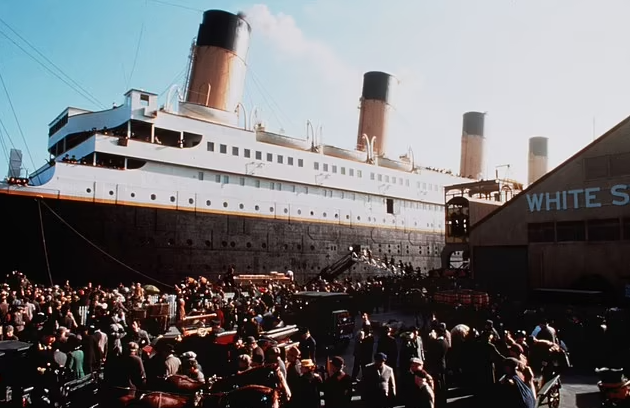Celebrated filmmaker James Cameron recently delved into the behind-the-scenes intricacies of his iconic 1997 film Titanic, unveiling some cost-cutting measures and on-set improvisations that contributed to the movie’s unparalleled success. The revelation comes on the occasion of the release of a 4K Ultra HD Blu-ray and a limited edition box set of the cinematic masterpiece.

In a conversation with the Los Angeles Times, the 69-year-old director shed light on the challenges he faced as the budget for Titanic spiraled to unprecedented heights, prompting studio concerns. Cameron, known for his calm demeanor under pressure, remarked, “We never panicked. The studio panicked. It’s our job not to panic.”
To stretch the budget and create the illusion of a grander set, Cameron employed a unique casting strategy. “We only cast short extras so it made our set look bigger. Anybody above five-feet-eight, we didn’t cast them. It’s like we got an extra million dollars of value out of casting,” he revealed.
The collaboration between Twentieth Century Fox and Paramount Pictures saw studio executives contemplating drastic cost-cutting measures, including eliminating a pivotal scene—the sinking of the ship. Cameron resisted this proposal, emphasizing that the sinking scene was strategically saved for the last part of the shoot. “It wasn’t because of strategy – it was simply because you sink the set last because otherwise it doesn’t look so good the next morning when you bring it back up,” he explained.

Titanic, with its $200 million budget, faced challenges in constructing massive and intricate sets, including a full-scale replica of the ill-fated vessel spanning 800 feet. The film’s budgetary constraints would be less daunting with modern technology, as Cameron noted that contemporary CGI could be employed to create similar effects with a smaller set.
Reflecting on the magnitude of the project, Cameron acknowledged engineering errors during the set construction. “The scale of everything was beyond anything we could imagine in terms of our prior experience. It was hundreds of miles of cabling, all the Musco lights in Hollywood at the time,” he said.
Despite initial doubts about the film’s financial viability, Titanic would go on to become a colossal success, grossing $600 million domestically and $1.84 billion worldwide. Cameron’s partner Jon Landau highlighted instances where financial compromises were made during filming, such as saving $750,000 by scrapping a set tilted at a three-degree angle.
As the 4K remastering of Titanic hits the shelves, Cameron took a break from his busy schedule to oversee the production. He included a National Geographic special, Titanic: 25 Years Later With James Cameron, exploring the enduring question of whether Leonardo DiCaprio’s character, Jack, could have survived on a floating door. The director engaged scientists and stunt performers at a New Zealand hypothermia lab to address the debated scenario.

Looking ahead, Cameron plans to release five more of his films in the updated 4K format: Aliens, Avatar, Avatar: The Way of Water, The Abyss, and True Lies. The enduring legacy of Titanic continues to captivate audiences, with Cameron’s revelations providing an intimate glimpse into the challenges and innovations that shaped this cinematic masterpiece.






